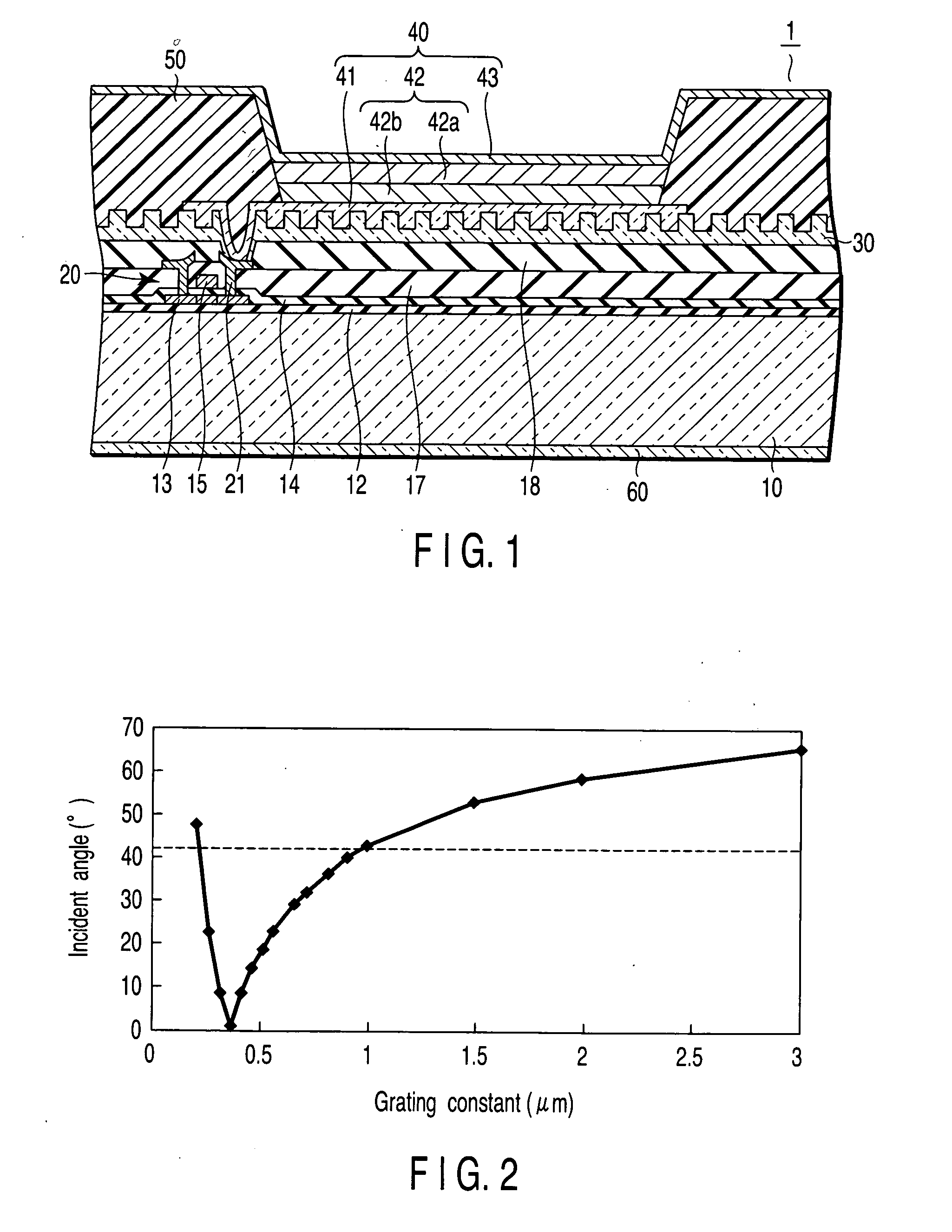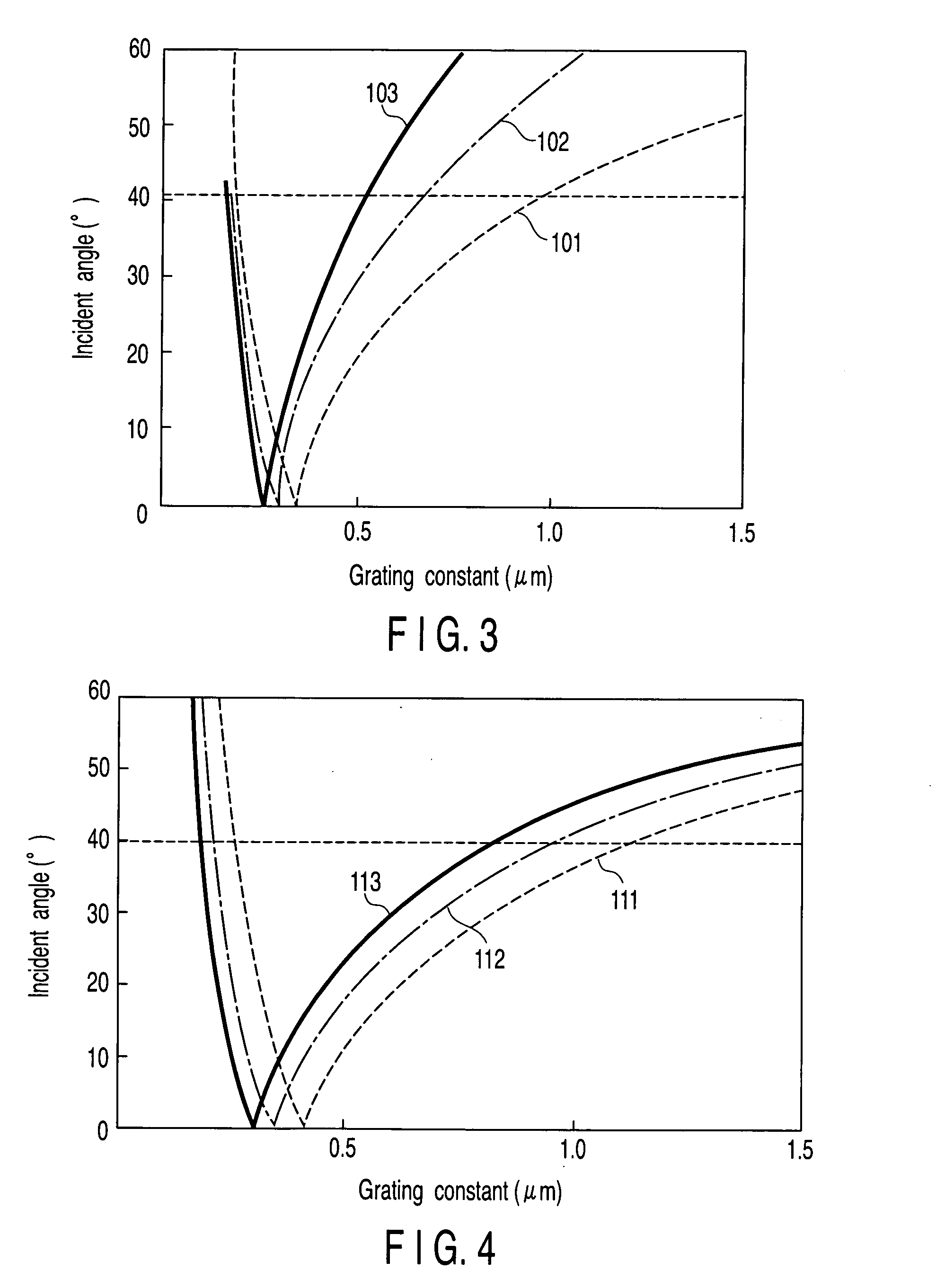Optical device and organic EL display
an optical device and organic technology, applied in the field of optical devices, can solve the problems of insufficient outcoupling efficiency of light emitting elements, and achieve the effect of increasing the luminous efficiency of optical devices
- Summary
- Abstract
- Description
- Claims
- Application Information
AI Technical Summary
Benefits of technology
Problems solved by technology
Method used
Image
Examples
first embodiment
[0026]FIG. 1 is a partial sectional view schematically showing an optical device according to the present invention. FIG. 1 illustrates a self-emission display and, more specifically, an organic EL display 1 as an example of the optical device. Referring to FIG. 1, the display surface, i.e., the front surface of the organic EL display 1 is directed downward, and the back surface is directed upward.
[0027] The organic EL display 1 is a bottom emission type organic EL display which employs an active matrix drive method. The organic EL display 1 includes a transparent substrate 10 such as a glass substrate as an insulating layer with light transmission property.
[0028] On the transparent substrate 10, pixels are arranged in a matrix form. Each pixel includes, for example, an element control circuit (not shown), an output switch 20, an organic EL element 40, which are connected in series between a pair of power source terminals, and a pixel switch (not shown). The control terminal of the...
second embodiment
[0067] the present invention will be described next.
[0068]FIG. 8 is a sectional view schematically showing an organic EL display according to the second embodiment of the present invention. FIG. 8 illustrates an organic EL display 1 with its front surface directed upward and its back surface directed downward.
[0069] The organic EL display 1 is a top emission type organic EL display. Hence, unlike the first embodiment, a substrate 10 need not have a light transmitting property.
[0070] As in the first embodiment, an undercoat layer 12, TFT, interlayer insulating film 17, and passivation film 18 are sequentially formed on the substrate 10. Contact holes are formed in a gate insulator 14 and the interlayer insulating film 17 and passivation film 18. Source and drain electrodes 21 are electrically connected to the source and drain of the TFT via the contact holes.
[0071] A reflecting layer 70 and a first portion 31 (integrated with the passivation film 18) of a diffraction grating 30 ar...
PUM
 Login to View More
Login to View More Abstract
Description
Claims
Application Information
 Login to View More
Login to View More - R&D
- Intellectual Property
- Life Sciences
- Materials
- Tech Scout
- Unparalleled Data Quality
- Higher Quality Content
- 60% Fewer Hallucinations
Browse by: Latest US Patents, China's latest patents, Technical Efficacy Thesaurus, Application Domain, Technology Topic, Popular Technical Reports.
© 2025 PatSnap. All rights reserved.Legal|Privacy policy|Modern Slavery Act Transparency Statement|Sitemap|About US| Contact US: help@patsnap.com



